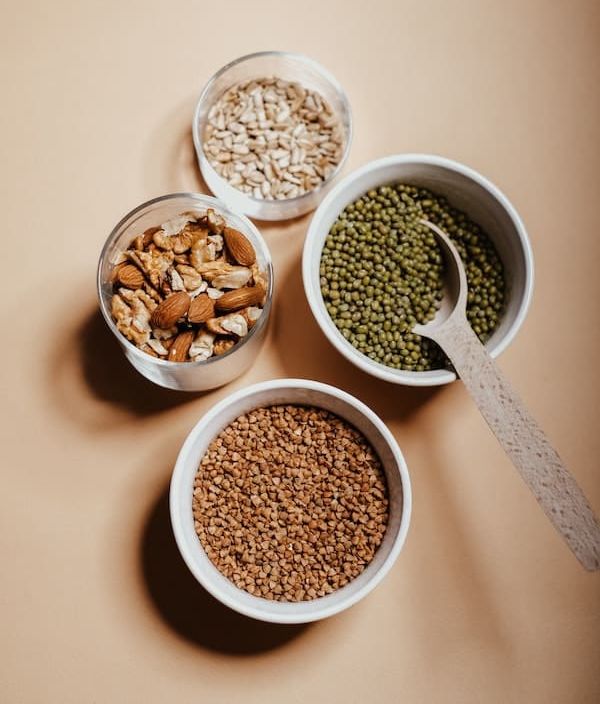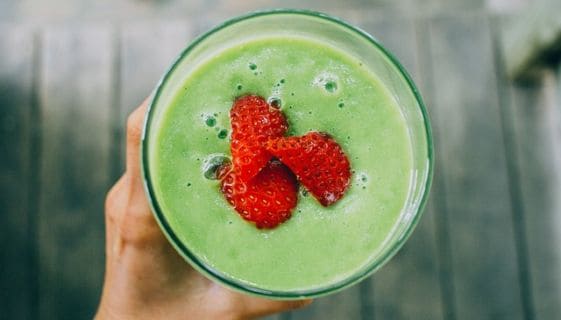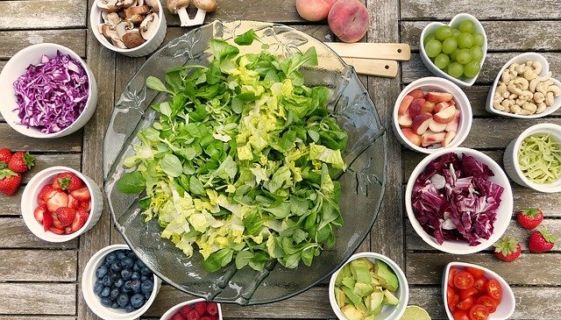You are probably unaware that our bodies make thousands of different proteins! Protein is required for the structure, function, and regulation of the body’s tissues and organs. Twenty different amino acids provide the “building blocks” of all our proteins.
Our bodies are able to manufacture eleven of the twenty amino acids required, but nine of them — the so-called “essential” amino acids — must come from our diet. To make proteins, we need to consume foods containing these nine essential amino acids in the course of each day — though thankfully we don’t need to do so at every single meal!
While plant foods collectively contain all nine essential amino acids, it is uncommon for one single plant-based food to have all nine essential amino acids in one serving. Animal sources of protein — such as meat, fish, poultry, dairy and eggs — DO provide all nine essential amino acids, but research supports the health benefits of reducing consumption of animal products and increasing plant-based eating. So, what’s a plant-based eater to do?
Happily, a varied plant-based diet can easily supply all nine essential amino acids on a daily basis. Consuming a variety of legumes, lentils, nuts, seeds and whole grains throughout the day will guarantee that your body receives all nine essential amino acids needed to create protein. People who eat a well-balanced plant-based diet and avoid animal protein entirely are fully able to consume adequate proteins and essential amino acids on a daily basis.
A helpful general guideline for those who avoid all animal proteins is to consume at least 3+ servings of legumes (beans, peas, lentils, peanuts, and soybeans) a day to ensure adequate protein intake. (A serving of cooked beans, peas, lentils, tofu or tempeh is considered ½ cup. A serving of peanuts is ¼ cup, and 2 tablespoons of peanut butter is considered a serving.).
Examples of plant-based foods high in protein:
- Peanut Butter
- Chia Seeds
- Tofu Some
- Tempeh (13 grams/3 ounces)
- Tofu (8 grams/3 ounces) Lentils (18 grams/1 cup cooked)
- Chickpeas (14 grams/1 cup cooked)
- Black Beans (10 grams/1 cup cooked)
- Hemp or Pumpkin Seeds (9 grams/3 Tbsp)
- Nuts or Chia Seeds (5-6 grams/1/4 cup)
- Peanut Butter (7 grams/2 Tbsp)
- Quinoa (8 grams/1 cup cooked)
- Oats (4 grams/1 cup cooked)
Some other plant-based foods that provide protein include soybeans, other beans and legumes (aside from the ones mentioned above), whole grains, and spinach.
Eat whole grains and legumes in a meal together or separately throughout the day. This pairing is a true dynamic duo, with respect to both flavor and health benefits. The protein and heart-healthy fiber in the beans slow down the absorption of the sugars found in the starch of the grains. Slower absorption helps stabilize blood sugar. Balanced blood sugar helps reduce insulin resistance and metabolic syndrome. Also, the grain-bean combination provides our body with a mixture of soluble fiber (beans) and insoluble fiber (grains), which helps us feel fuller longer, supports digestive regularity, has cardiovascular protective effects, and promotes a healthy gut microbiome.
Here are some easy combos to try:
- Rice and beans
- Peanut butter or almond butter and whole wheat or gluten-free bread
- Quinoa and chickpeas
- Popcorn and nuts
- Bean soup and whole grain crackers
- Pasta mixed with peas – Hummus: chickpeas blended with sesame seed paste (tahini)



 Ananda Kaplan
Ananda Kaplan 

